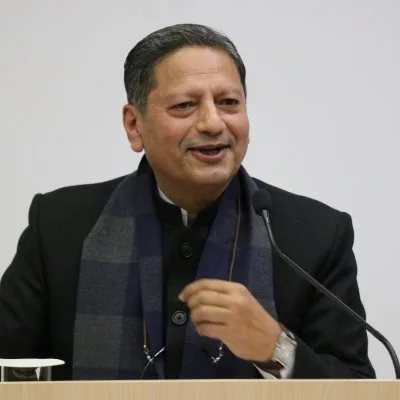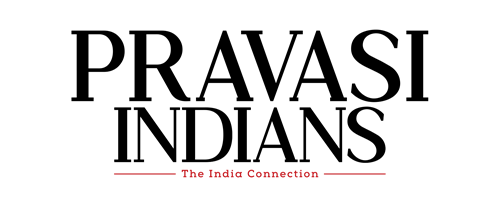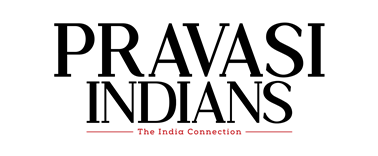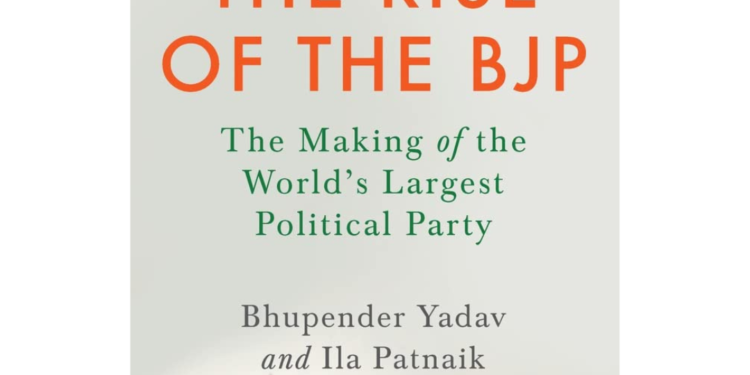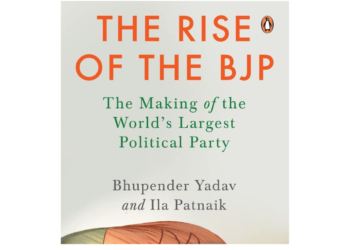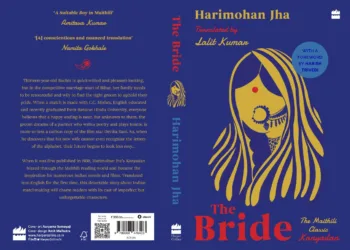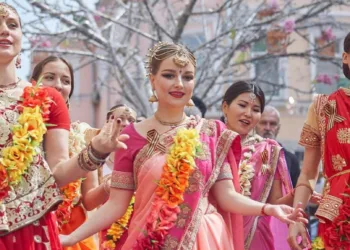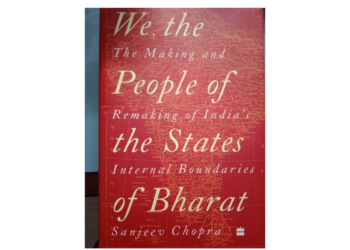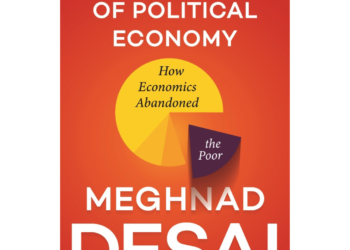The Rise of the BJP: The Making of the World’s Largest Political Party
Bhupendra Yadav and Ila Patnaik
By Dr Sanjeev Chopra
This is not just a book on the rise of the BJP – it is also a fascinating account of contemporary India, and how democracy has panned out over the last seven decades, especially after the founding of the Bhartiya Jan Sangh, the political predecessor to the world’s largest political party, which today controls not just the Union government, but also ten state governments directly, and five with alliance partners. The Congress rules over five states and is at the helm with its alliance partners in another three!
With 282 seats in the Lok Sabha and 95 in the RS, the party is firmly in control as the Congress has just 50 seats in LS and 31 in the Rajya Sabha. But more than the seats, it controls the mind space, the vote share, and the narrative on Bharat. In fact, as mentioned in the preface, the book is more specifically the story of the BJP’s phenomenal rise from just two seats in the Lok Sabha in 1984 to an overwhelming majority in 2019! Incidentally, the Bhartiya Jan sangha and the Bhartiya Janata Party have used Bharat as an appellation, whereas the Congress describes itself as the Indian National Congress and so do the communist parties!
Union minister Yadav and academic Ila Patnaik have built an eminently readable narrative which starts with India’s quest for freedom – more specifically how Mahatma Gandhi took the Congress out of its sheltered English-speaking cloister to become a mass movement which incorporated almost every shade of nationalist opinion. In fact, there is hardly anyone on the national firmament – from Pandit Madan Mohan Malviya to MA Jinnah who had not been at some point of time, a member of the INC. But Gandhi was not seeking political freedom alone – his effort was to regain control over the self-respect, self-realization, and self-rule of the nation which is best described in his Hind Swaraj.
However, to return to the point – this book is principally about the rise of the BJP, and its umbilical links with the RSS as well as its earlier avatar as the Jan Sangh, with ‘deepak’ as the symbol. The RSS was born 98 years ago on the Vijayadashmi day at Nagpur. However, the founder, Dr Hedgewar, continued to be a member of the Congress and was actively engaged with the Congress Sewa Dal, which had been established in 1923. Although Veer Savarkar had established Hindu Mahasabha in 1915, the RSS had a different objective: the revival and resurgence of Bharat’s spiritual and cultural heritage.
In fact, it was the ban on the RSS in 1948 after the assassination of Mahatma, in which Godse and eight others from the Hindu Mahasabha had been arraigned with the conspiracy to kill Gandhi which acted as the spur for the new party, closely affiliated with the RSS. It was decided that Shyama Prasad Mookerjee, who had resigned from the Congress on the issue of the Nehru -Liaquat pact as well as the policy on J&K, should head a new pan-India party. At the first all-India convention, Mookerjee said: “The Bhartiya Jan Sangh, therefore, emerges today as an All-India political party which will function as the principal party in the opposition. Opposition does not mean a senseless or destructive approach to all problems that confront a responsible government. Our aim will be to approach all problems in a constructive spirit.”
From the very beginning, the approach and philosophy of the Congress was at variance on most issues – from the Uniform civil code to the state control over economy. Bhartiya Jan Sangh suffered a big blow when the founding president died while in detention in Srinagar on 23 June 1953, and the second president, Mauli Chand Sharma, left the party after accepting a ministerial berth under Nehru. During the 1962 war, Deen Dayal Upadhyaya set aside his differences with the Congress, and rallied to organize civil defence and assist the soldiers on the frontiers: so much so that it was invited to attend the Independence Day parade in 1963. At least on two occasions – in Hyderabad and during the liberation struggle for Goa, the Congress and RSS worked hand in hand.
After the fragmentation of the Congress, many new formations – from the Praja Socialist Party (PSP) to Swatantra Party to Lohia’s Samyukta Socialist party – and the ideological divide was clear. Swatantra party was seen as the bastion of the ex-rulers and the most prominent industrialists, whereas the PSP, SSP and the communist parties were inclined to the left with the caveat that while the communist parties had the dictatorship of the proletariat as the long-term objective, for the socialist parties, the goal had to be achieved through parliamentary democracy.
After the untimely demise of Shastri in January 1966, Indira Gandhi appeared on the Indian political scene and led the nation to victory in the 1971 war. However, she became extremely unpopular during the Emergency years, in which the entire opposition, including the RSS and Jan Sangh leadership, was arrested. Under the guidance of Jayaprakash Narayan, all opposition groups came together to constitute the Janata party. But ego clashes and the machinations of the Congress saw the failure of the Janata regime – both under Morarji Desai and Charan Singh. The Janata party broke under its own contradictions and the BJP was resurrected with Vajpayee as the president and Advani as the general secretary on April 6, 1980 and committed itself to ‘panch nishtha’, which included nationalism and national integration, commitment to democracy and fundamental rights, Sarva Dharma Sama Bhava – the idea of positive secularism, Gandhian socialism, and value-based politics. Said Vajpayee: Andhera Chhatega, Sooraj Nikelga, Kamal Khilega.
Although the Congress did come to power riding a sympathy wave after the assassination of Indira Gandhi and Rajiv Gandhi, the party had been reduced to a dynastic entity with many coteries, each trying to outdo the other for their specific gains. The Congress made some very opportunistic alliances to stay in power – propping up Bhindranwale in Punjab, appeasing Muslims in the Shah Bano case, and opening the gates of the Ram mandir in an attempt to capture the Hindutva vote. All of these failed – because none of these was driven by a coherent ideology.
On the other hand, BJP was able not just to articulate a clear strategy – but also take it to the masses through the many yatras which it undertook, starting with Ram Rath Yatra. The support base increased – and the BJP was also able to prevent division of the Hindu vote as envisaged by SP, JD (U), Lok Dal and the BSP. Its support for the Mandal Commission, as against the opposition to it by the Congress, also saw the BJP rid itself of the label of being just a Brahmin-Bania party – the pejorative term with which it was described. The BJP learnt to work with non-Congress opposition parties and evolved the ethics of the coalition dharma. This dharma has enabled it to work, time and again with diverse parties: in fact every party with the exception of Congress and the Communists have been part of the NDA at some point of time or the other.
The authors also mention that the communist parties and the RSS were the only real cadre-based parties in the country – the rest were in politics for the sake of power.
The recent history of the party – its rise and that of prime Minister Modi – is too fresh to bear repetition. As of now, the party is riding on the crest of its success in almost all elections – Karnataka notwithstanding – but BJP is also realising that being in power for a long time is fraught with its own contradictions. BJP lived up to the challenge of becoming the world’s largest political party, but staying on the top and managing the contradictions that come with power has its own set of challenges. We look forward to getting a peep into this aspect in the authors’ forthcoming book!
